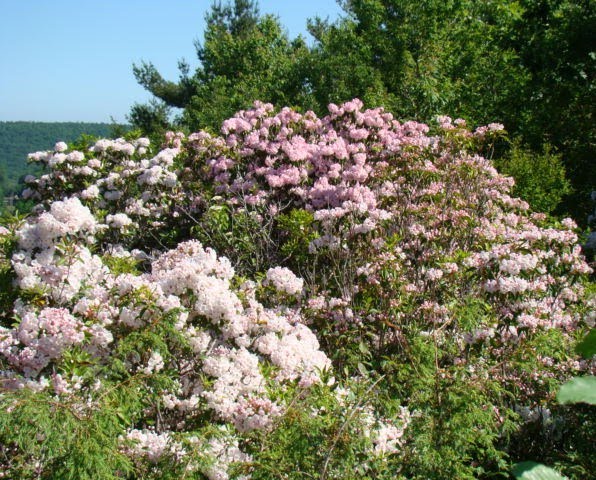
General Information
Leucothoe is a broadleaf evergreen weeping shrub with lance-shaped leaves on arching narrow stems. It is an attractive medium size landscape plant, valuable for use with other evergreens, as foundation plantings, or in woodland gardens. This plant is native to North America and can be found along shady stream banks in the southern Appalachian Mountains.

Plant Habit and Form
Leucothoe grows 3 to 5 feet, occasionally to 6 feet. It has a graceful drooping habit with a fountain-like effect. The slender stems have almost no branching. Lustrous green leaves are borne alternately on stems with new growth varying in colors from red to bright green, bronze to purple. In winter, the leaves are bronze to purplish in sunlight. In spring the arching branches are covered with creamy white urn-shaped flowers, but the lustrous, leathery leaves often cover the display.
Growing Requirements
Leucothoe can be fastidious about its growing conditions. It requires a shaded location with evenly moist but well-drained, slightly acidic soil that is high in organic matter. It does not tolerate dry, hot, sunny conditions or clay soils. Overhead irrigation systems of watering from above the plant can create problems for this plant. It is important to avoid wetting the foliage when watering. Leucothos is generally hardy in zones 5 to 8.
Flowering and Fruiting
Leucothoe blooms in spring with racemes of creamy white, urn-shaped flowers borne along the branches. Due to the abundant, handsome, leathery foliage, the blooms go not create a showy display and often go unnoticed. The fruit is a dry round capsule.
Pests and Diseases
Leucothoe is highly susceptible to a number of leaf spot diseases and root rot brought on by unfavorable cultural conditions.
ID Tips
Low habit with graceful arching branches of alternate, leathery, evergreen leaves that turn red or bronze in winter.

